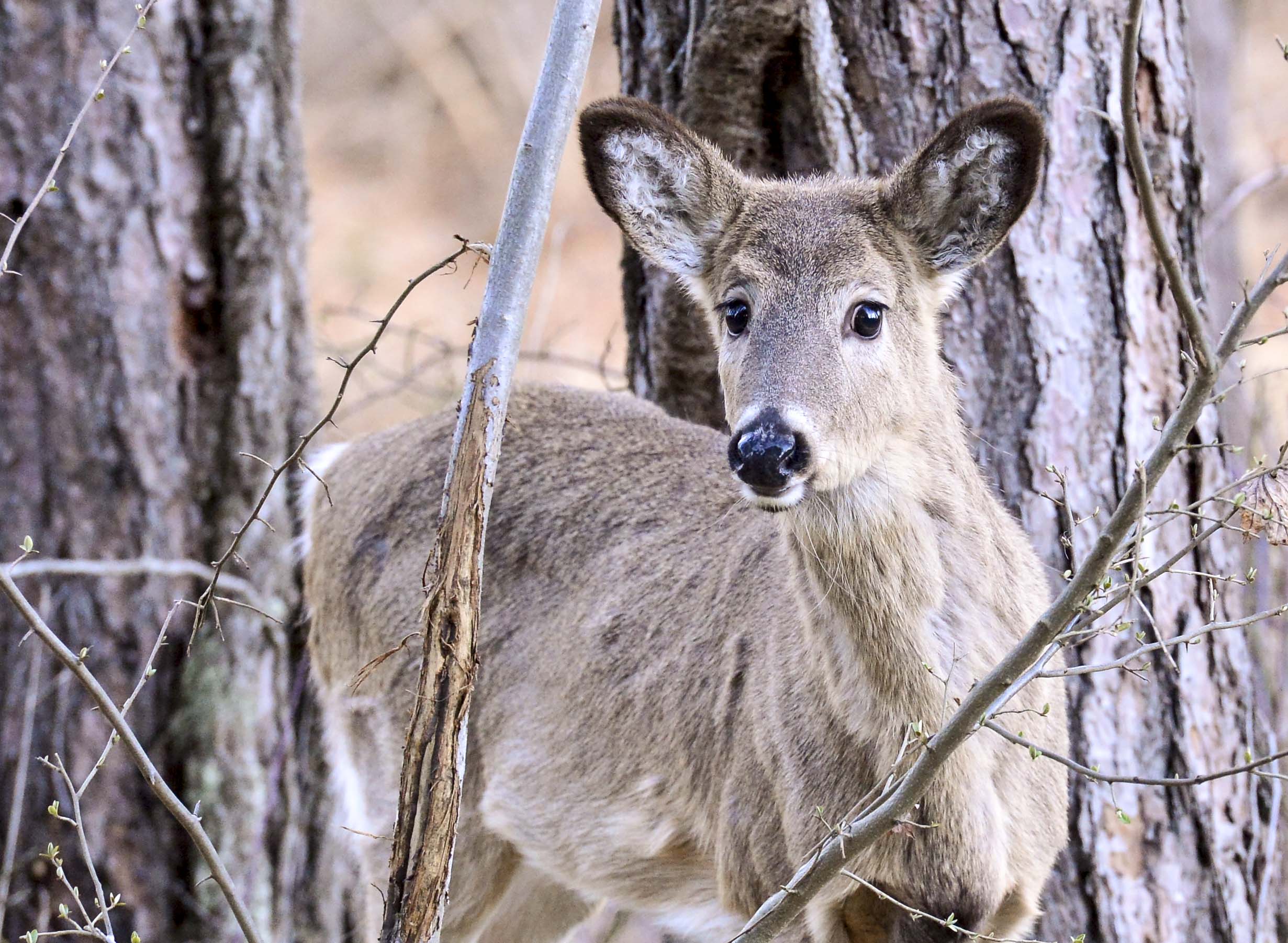Oh dear. Oh deer. Oh dear, oh deer.
If you’ve gardened, or have friends who have, you probably know about deer overpopulation. Even if your haven’t had horticultural damage by local whitetails you’ve probably witnessed it when walking or hiking in local woods.
An article on the West Virginia Department of Natural Resources website reads, “It has been estimated that in the United States deer damaged a total of $100 million of agricultural crops, $750 million of forest regeneration, and $1 billion in deer vehicle accidents. Economic and recreational benefits from deer were judged to be $14 billion.”
I haven’t calculated how much deer damage has cost me over my years of gardening attempts, but it is definitely more than 50% of what I put into my garden. Plus the emotional damage. So far this year my new fencing system has mostly kept the deer out of my vegetables and berries (fingers crossed it keeps working).
I listened to a podcast recently about deer and forest health — I learned several things, including that deer population should max out at a herd size of 10 deer per square mile for a forest to be healthy.
Online I read that a healthy forest can sustain up to 20 deer per square mile, but if the forest is already struggling the population shouldn’t be more than five deer per square mile.
Apparently a single deer eats about 12 pounds of food in a day. That’s a lotta leaves! Many of those are from our gardens and many are from the woods — wildflowers, saplings, etc.
I found available data on deer populations in the U.S. and specifically our state unsatisfactory, with surprisingly little information. Apparently counting deer is difficult and expensive.
The DNR estimated West Virginia hunters harvested 99,437 deer during the 2019-20 hunting seasons. Coyotes prey on fawns; according to a study in South Carolina their impact was high enough to affect the population but not to control it.
There are no other controls of the deer population, and from some attempts at estimating deer density, it seems clear there is an overpopulation, explaining what we see happening around us. Maps of deer density from the 70s, 80s and early 2000s show an increase in population in this part of the country, outgrowing what our ecosystem can support.
About a decade ago, the deer population at and around Cornell University in Ithaca, N.Y., reached infestation levels. Their grazing on native plants allowed non-natives and invasives to take hold, in addition to the aforementioned problems.
Scientists at the university decided to try sterilizing 77 does by blocking or severing their fallopian tubes. With the help of university vets, the cost apparently amounted to about $1,200 per deer surgically sterilized.
While the birth rate did decrease in the years after these surgeries, the total number of deer (around 100) did not. The sterilized does, who naturally go into heat once per year, began going into heat monthly, releasing chemical signals to bucks miles around. The increased number of bucks offset the lower birth rate in an observed five-year period.
Additionally several of the does experienced tissue regrowth and still gave birth to fawns.
After this experiment, Cornell University invited volunteer archers to hunt — they reduced the deer population by about half, ate the meat and donated extra to anyone who wanted some.
While on the one hand this illustrates unintended consequences in science and social engineering, I also think of it as an example of how hard it is to beat the deer.
ALDONA BIRD is a journalist, exploring possibilities of local productivity and sustainable living in Preston County.
TWEET @DominionPostWV





